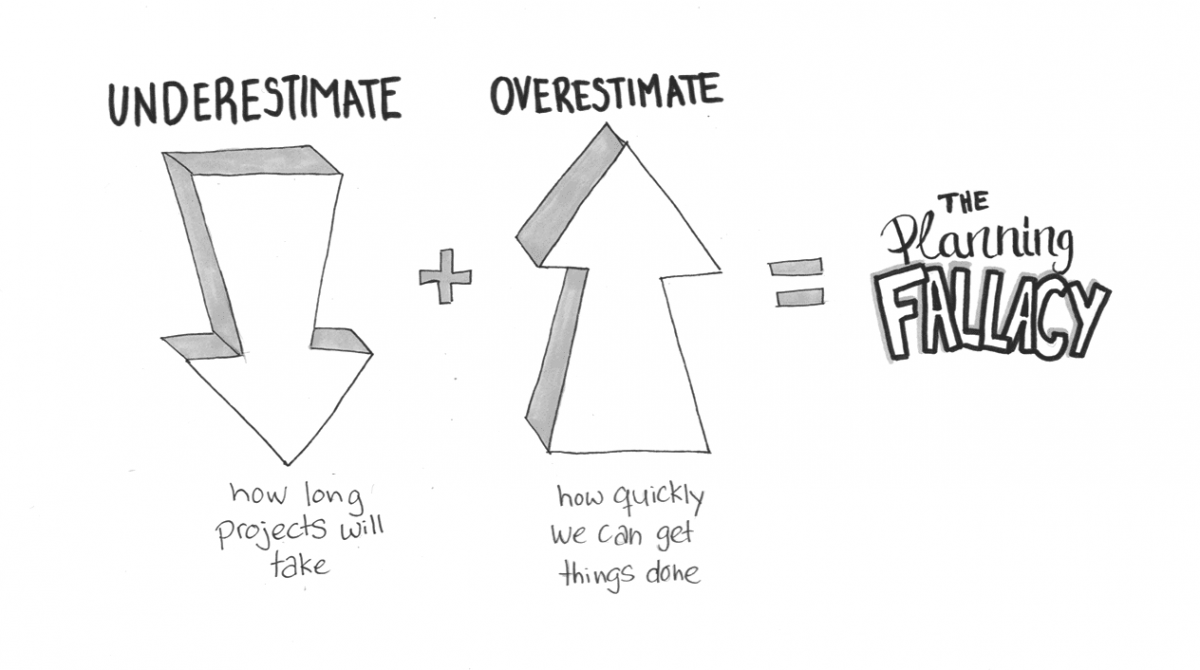Introduction
When it comes to decision-making, humans often exhibit a cognitive bias known as the Planning Fallacy. The Planning Fallacy refers to our tendency to underestimate the time, effort, and resources required to complete a task or achieve a goal. This mental model is deeply rooted in human psychology and has significant implications for our decision-making processes. In this comprehensive blog post, we will delve into the concept of the Planning Fallacy, its prevalence in our day-to-day lives, examples of its occurrence in various contexts, underlying biases, strategies to identify and overcome it, and the importance of actively avoiding this mental trap.
Understanding the Planning Fallacy
The Planning Fallacy stems from our inherent optimism and the belief that things will go according to plan. When making decisions, we often overlook potential obstacles, unforeseen circumstances, and our own past experiences of similar tasks taking longer than expected. As a result, we consistently underestimate the time, effort, and resources needed to complete a task or reach a goal.
Examples of the Planning Fallacy
Personal Life Decisions:
Imagine you decide to renovate your kitchen. You create a detailed plan, estimating that the project will be completed within two weeks. However, due to unforeseen complications, such as delays in material delivery and additional repair work, the project ends up taking twice as long. Despite your best intentions, the Planning Fallacy caused you to underestimate the time required and disrupted your schedule and daily life.
Business Scenarios:
In the business world, the Planning Fallacy can have detrimental effects. For instance, a company might embark on a product development project and set a timeline based on optimistic estimates. However, due to technical challenges, market changes, and unforeseen hurdles, the project faces delays, cost overruns, and missed market opportunities. By failing to account for the Planning Fallacy, the company’s decision-makers made decisions based on unrealistic expectations, leading to suboptimal outcomes.
Public Policy-Making:
The Planning Fallacy can also impact public policy-making. For instance, governments often underestimate the time and resources required for large-scale infrastructure projects. As a result, projects end up taking longer, costing more, and causing inconvenience to the public. The failure to account for the Planning Fallacy in project planning can have significant economic and social consequences.
Mental Biases and Underlying Psychological Factors
Several mental biases contribute to the Planning Fallacy. One key bias is Optimism Bias, which leads us to have an overly positive outlook on the future and underestimate the likelihood of negative events or obstacles. Confirmation Bias also plays a role, as we tend to selectively seek and interpret information that supports our optimistic beliefs, while ignoring or downplaying contradictory evidence.
Another psychological factor is our tendency to rely on personal experiences and anecdotal evidence when estimating the time required for a task. This can lead to a narrow focus and the exclusion of external factors or the experiences of others, further exacerbating the Planning Fallacy.
Identifying and Overcoming the Planning Fallacy
To mitigate the Planning Fallacy and make more realistic decisions, consider the following strategies:
Past Experiences and Data: Review and analyze past experiences and data from similar tasks or projects. Look for patterns and identify any recurring obstacles or challenges that could impact your current decision. This will provide a more accurate basis for estimating time and resources required.
External Input: Seek input from individuals who have relevant expertise or have previously undertaken similar endeavors. By incorporating diverse perspectives, you can gain insights into potential challenges, risks, and timeframes that you may have overlooked.
Buffer and Contingency Planning: Build buffers and contingency plans into your decision-making process. Account for unexpected delays, obstacles, and the possibility of things not going according to plan. By allocating extra time and resources, you can better prepare for contingencies and reduce the impact of the Planning Fallacy.
Review and Learn: Continuously monitor and evaluate your progress and adjust your plans accordingly. Regularly reassess your decisions and timelines to ensure they remain realistic and aligned with the evolving circumstances.
Conclusion
The Planning Fallacy is a common cognitive bias that can hinder effective decision-making. By understanding its influence and the mental biases and psychological factors that contribute to it, we can develop strategies to overcome this bias. The examples provided in this blog post illustrate how individuals and groups often make irrational decisions by underestimating the time, effort, and resources required for tasks and goals. By identifying the Planning Fallacy, incorporating past experiences and external input, planning for contingencies, and continuously reviewing and learning from our decisions, we can make more realistic and successful choices. Ultimately, awareness and active avoidance of the Planning Fallacy can lead to improved decision-making, increased efficiency, and better outcomes in our personal and professional lives.
